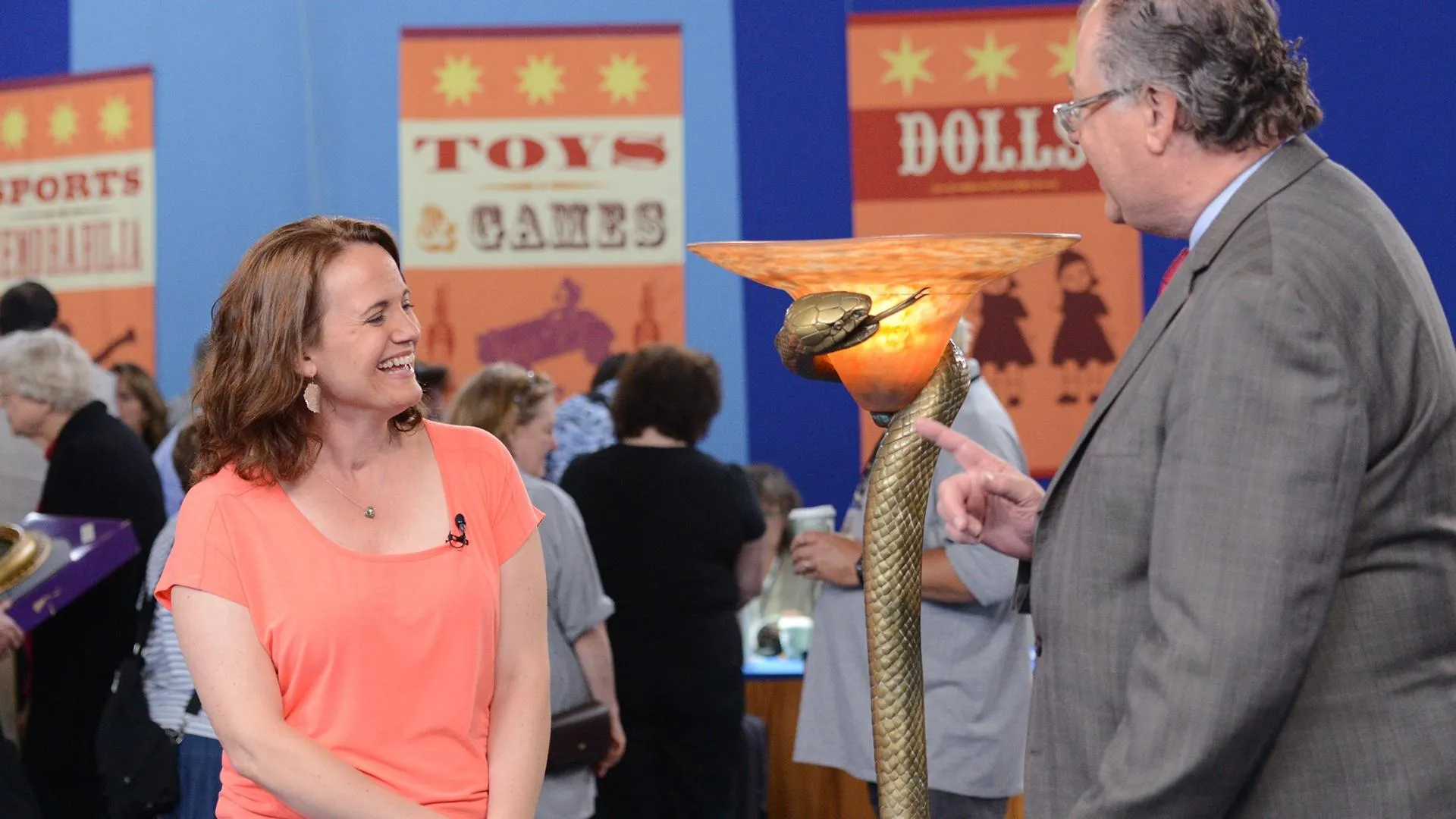GUEST: My great-grandfather had what I was told the largest mercantile store west of the Mississippi during the mid, late 1800s. The table came to him when a fellow was commissioned to do the table. He came to my great-grandfather and asked him if he could get his groceries on credit while he was building the table. He told him that when he finished the table, he would then pay him for the groceries. When the table was finished, the man who commissioned the table tried to pay the artist less than what he originally agreed upon, and so he told him, "Forget it, I'm going to give the table to my friend who helped me out during this time." And so that's how my great- grandfather got the table.
APPRAISER: Well, it is a spectacular, grand table.
GUEST: Thank you.
APPRAISER: And we were having conversations about it, the other furniture appraisers, and there was some disagreement on whether or not it was an American table or a European table.
GUEST: Oh, interesting.
APPRAISER: And the reason for that is that it has such Germanic qualities to it. We settled on American because there is secondary wood under the table, which is pine. The table itself is walnut, and it has this great burled walnut veneer on the top.
GUEST: Yeah, it's beautiful.
APPRAISER: And you can see how beautifully it's matched in this quarter section so that you have a bookmatch veneer. The table was late 19th century. We would call it a Renaissance revival table. And it really is looking to Europe for its inspiration. And if you look at what the craftsman did with this table, at the base especially, he brings in a lot of history. You see that there's an Egyptian figure inlaid here, and then also a griffin figure, which is body of a lion, eagle wings-- it's really a mythological figure. And then also this warrior. During the 19th century, Victorians were collecting all sorts of things, and they're collecting stories in this table for sure. And then there's this lovely ivy border around the top of the table, which symbolizes friendship and fidelity and...
GUEST: Oh, okay.
APPRAISER: So it's really sending us a lot of messages. Family history tells you that it was made in California. That's sort of a stretch for me.
GUEST: Why is that?
APPRAISER: Well, because they were not really making a lot of furniture like this in California that early.
GUEST: Oh, interesting.
APPRAISER: Most of the furniture that we see of this quality is happening in the New England area into New York, Chicago. Sometimes family stories, they can morph a little.
GUEST: I have no doubt.
APPRAISER: I would say that it's probably got an auction estimate in the $3,000 to $5,000 range.
GUEST: Oh, very good.



